Related Research Articles
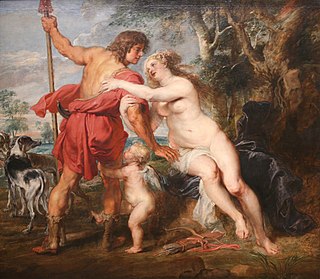
The Baroque is a highly ornate and often extravagant style of architecture, music, dance, painting, sculpture and other arts that flourished in Europe from the early 17th century until the 1740s. In the territories of the Spanish and Portuguese empires including the Iberian Peninsula it continued, together with new styles, until the decade of 1800s. It followed Renaissance art and Mannerism and preceded the Rococo and Neoclassical styles. It was encouraged by the Catholic Church as a means to counter the simplicity and austerity of Protestant architecture, art and music, though Lutheran Baroque art developed in parts of Europe as well.

Frank Owen Gehry,, FAIA is a Canadian-born American architect, residing in Los Angeles.

Art Nouveau is an international style of art, architecture and applied art, especially the decorative arts, known in different languages by different names: Jugendstil in German, Stile Liberty in Italian, Modernisme in Catalan, etc. In English it is also known as the Modern Style. The style was most popular between 1890 and 1910. It was a reaction against the academic art, eclecticism and historicism of 19th century architecture and decoration. It was often inspired by natural forms such as the sinuous curves of plants and flowers. Other characteristics of Art Nouveau were a sense of dynamism and movement, often given by asymmetry or "whiplash" curves, and the use of modern materials, particularly iron, glass, ceramics and later concrete, to create unusual forms and larger open spaces.

Neoclassicism is the name given to Western movements in the decorative and visual arts, literature, theatre, music, and architecture that draw inspiration from the "classical" art and culture of classical antiquity. Neoclassicism was born in Rome largely thanks to the writings of Johann Joachim Winckelmann, at the time of the rediscovery of Pompeii and Herculaneum, but its popularity spread all over Europe as a generation of European art students finished their Grand Tour and returned from Italy to their home countries with newly rediscovered Greco-Roman ideals. The main Neoclassical movement coincided with the 18th-century Age of Enlightenment, and continued into the early 19th century, laterally competing with Romanticism. In architecture, the style continued throughout the 19th, 20th and up to the 21st century.

Modern architecture, or modernist architecture, was based upon new and innovative technologies of construction, particularly the use of glass, steel and reinforced concrete; the idea that form should follow function (→functionalism); an embrace of minimalism; and a rejection of ornament. It emerged in the first half of the 20th century and became dominant after World War II until the 1980s, when it was gradually replaced as the principal style for institutional and corporate buildings by postmodern architecture.
The grandes écoles of France are higher education establishments that are separate and parallel, but often connected to, the main framework of the French public university system. Grandes écoles are highly selective, elite, and prestigious institutions; their graduates have dominated upper levels of the private and public sectors of French society for decades.
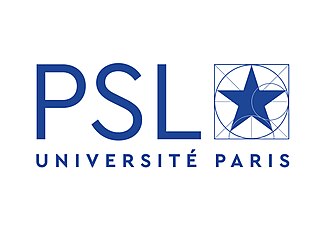
The École nationale supérieure des Beaux-Arts is a fine arts grand school of PSL Research University in Paris, France.
Parsons School of Design, known colloquially as Parsons, is a private art and design college located in the Greenwich Village neighborhood of Lower Manhattan in New York City. It is one of the five colleges of The New School.
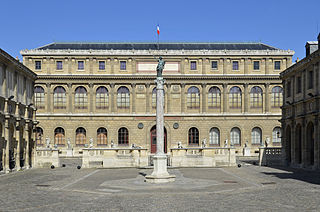
Beaux-Artsarchitecture was the academic architectural style taught at the École des Beaux-Arts in Paris, particularly from the 1830s to the end of the 19th century. It drew upon the principles of French neoclassicism, but also incorporated Gothic and Renaissance elements, and used modern materials, such as iron and glass. It was an important style in France until the end of the 19th century. It also had a strong influence on architecture in the United States, because of the many prominent American architects who studied at the Beaux-Arts, including Henry Hobson Richardson, John Galen Howard, Daniel Burnham, and Louis Sullivan.

Founded in 1750 by King Louis XV, the École Militaire is a vast complex of buildings housing various military training facilities. It is located in the 7th arrondissement of Paris, France, southeast of the Champ de Mars.

Amédée Ozenfant was a French cubist painter and writer. Together with Charles-Edouard Jeanneret he founded the Purist movement.

Konstantin Alekseyevich Korovin was a leading Russian Impressionist painter.

Christian de Portzamparc is a French architect and urbanist.
The Rice University School of Architecture is an undergraduate and graduate institution for the built environment at Rice University in Houston, Texas. Rice's graduate and undergraduate programs in architecture typically maintains an enrollment of around 200 students. Founded in 1912, the faculty consists of twenty architects, historians, and theoreticians, supplemented by visiting scholars and is led by Dean and Professor Sarah Whiting.
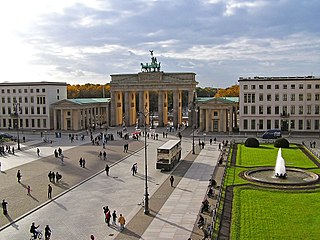
Pariser Platz is a square in the centre of Berlin, Germany, situated by the Brandenburg Gate at the end of the Unter den Linden. The square is named after the French capital Paris in honour of the anti-Napoleon Allies' occupation of Paris in 1814, and is one of the main focal points of the city.
The Mackintosh School of Architecture (MSA) is one of the five schools which make up the Glasgow School of Art, situated in the Garnethill area of Glasgow, Scotland. The Mackintosh School of Architecture is the Glasgow School of Art's only academic school concerned with a single discipline.
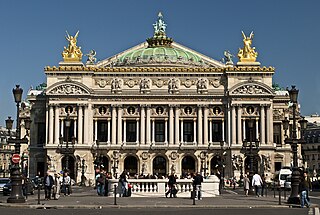
The Napoleon III style, also known as the Second Empire style, was a highly eclectic style of architecture and decorative arts, which used elements of many different historical styles,and also made innovative use of modern materials, such as iron frameworks and glass skylights. It flourished during the reign of Emperor Napoleon III in France (1852–1871) and had an important influence on architecture and decoration in the rest of Europe and the United States. Major examples of the style include the Opéra Garnier (1862–1871) in Paris by Charles Garnier, the Bibliothèque nationale de France. and the Church of Saint Augustine (1860–1871). The architectural style was closely connected with Haussmann's renovation of Paris carried out during the Second Empire; the new buildings, such as the opera, were intended as the focal points of the new boulevards.

An École des Beaux-Arts is one of a number of influential art schools in France. It is the cradle of beaux-arts style in architecture and city planning that thrived in France and the United States during the end of the nineteenth century and the first quarter of the twentieth century. The most famous is the École nationale supérieure des Beaux-Arts, now located on the left bank in Paris, across the Seine from the Louvre, at 14 rue Bonaparte. The school has a history spanning more than 350 years, training many of the great artists in Europe. Beaux Arts style was modeled on classical "antiquities", preserving these idealized forms and passing the style on to future generations.

Architecture is both the process and the product of planning, designing, and constructing buildings or any other structures. Architectural works, in the material form of buildings, are often perceived as cultural symbols and as works of art. Historical civilizations are often identified with their surviving architectural achievements.

The École des ingénieurs de la ville de Paris or "Engineering School of Paris City" is the only French « Grande École d'ingenieurs», with an emphasis on urban engineering. Supported by the City of Paris, this higher education school is a member of the PRES Paris-Est, along with the École des Ponts.
References
- ↑ Fulcher, Merlin. "Competition: Future Monuments, Paris - The Architectural Review". Architectural Review.
- ↑ "Paris School of Architecture". Paris School of Architecture. Retrieved 2017-10-18.
| This article about a French university, college, or other educational institution is a stub. You can help Wikipedia by expanding it. |